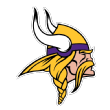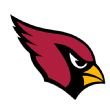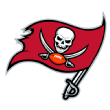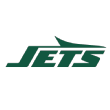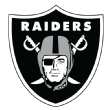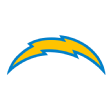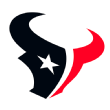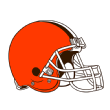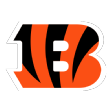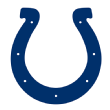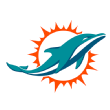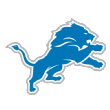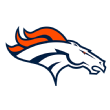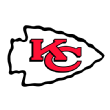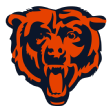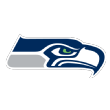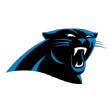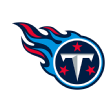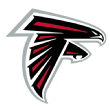Wagerallsports
Wagerallsports
Administrator
Staff member
- Joined
- Mar 6, 2018
- Messages
- 52,827
Fantasy football draft sleepers, busts, breakouts for 2021
ESPN PLUS ($ MATERIAL)
As we enter into the heart of fantasy football draft season, the ESPN Fantasy Football experts are here to bring you their latest sleepers, busts and breakout players for the 2021 campaign, as defined here:
- Sleeper: A player who is being overlooked and will outperform their average draft position (ADP) in 2021.
- Bust: A player who is highly regarded and will underperform their ADP in 2021.
- Breakout: A player (rookies included) who will rise up with career-best numbers in 2021 and make a huge impact.
Each analyst named a sleeper and a bust for each of the major offensive positions, as well as one breakout candidate. You can find their picks below, and their analysis and insight on a selection of players they felt most passionate about in each category.
Quarterback sleepers
Stephania Bell: Carson Wentz, Indianapolis ColtsMatthew Berry: Ryan Fitzpatrick, Washington Football Team
Matt Bowen: Matthew Stafford, Los Angeles Rams
Tom Carpenter: Ryan Fitzpatrick, Washington Football Team
Mike Clay: Tua Tagovailoa, Miami Dolphins
Tristan H. Cockcroft: Joe Burrow, Cincinnati Bengals: "Yes, it's typically a slow, lengthy recovery from a knee construction, and the wise approach is to draft the player in Year 2 removed from it, but in Burrow's case, that long-standing injury advice actually serves to seriously deflate his draft value. He's a low-to-mid-range drafted QB2 with top-10 skills, having been the No. 1 pick of the 2020 NFL draft and fantasy's QB14 in his nine completely healthy games as a rookie. Burrow has a strong set of receivers (Tee Higgins, Ja'Marr Chase, Tyler Boyd and tight end Drew Sample) and he plays for a team with a shaky defense that should force him into a high volume of throws."
Daniel Dopp: Matthew Stafford, Los Angeles Rams
Eric Karabell: Jalen Hurts, Philadelphia Eagles
Keith Lipscomb: Joe Burrow, Cincinnati Bengals
Jim McCormick: Trey Lance, San Francisco 49ers
Field Yates: Trey Lance, San Francisco 49ers
Kyle Soppe: Daniel Jones, New York Giants
Joe Kaiser: Trevor Lawrence, Jacksonville Jaguars
Quarterback busts
Stephania Bell: Matt Ryan, Atlanta FalconsMatthew Berry: Matt Ryan, Atlanta Falcons: "It's not that Ryan will be a bad fantasy QB this year, it's that just being solid isn't enough. Eight of the top 10 QB's last year (and 9-of-10 in 2019) had at least 200 yards rushing. You need to run these days to be an elite fantasy QB and Ryan doesn't run -- he's never had a year with 150-plus rushing yards -- which means he needs to be unreal in the passing game to deliver top-10 or even top-12 production. And that's gonna be tough for him this year with no Julio Jones. Last year, in the nine games where Jones didn't play or left early, Ryan averaged 14.2 fantasy points, 256 passing yards and just over 1 TD pass per game. Yeesh! You can throw Kyle Pitts at me all you want but I don't care how talented he is, there's no rookie tight end that will fully make up for Julio Jones in their first year. Add in the fact that Ryan will be learning a new system with new head coach Arthur Smith and Ryan is best left to be a bye week fill-in in the right matchup, rather than someone you use as a fantasy starter this year."
Matt Bowen: Matt Ryan, Atlanta Falcons
Tom Carpenter: Baker Mayfield, Cleveland Browns
Mike Clay: Matt Ryan, Atlanta Falcons
Tristan H. Cockcroft: Matt Ryan, Atlanta Falcons
Running back sleepers
Stephania Bell: Trey Sermon, San Francisco 49ersMatthew Berry: Myles Gaskin, Miami Dolphins
Matt Bowen: Trey Sermon, San Francisco 49ers: "With the contact balance and decisive running style to produce in Kyle Shanahan's offense, Sermon is an easy sleeper pick at his current ADP of RB41. Since 2017, the 49ers rank No.4 in RB fantasy points per game (27.9), while also averaging a league-high 2.82 yards per carry before first contact. Yes, Sermon joins a crowded running back room in San Francisco. However, I believe the rookie has the pro-ready traits to ascend the depth chart quickly as a volume ball carrier who can also impact the passing game in PPR formats on swings, screens and unders."
Tom Carpenter: Clyde Edwards-Helaire, Kansas City Chiefs
Mike Clay: Myles Gaskin, Miami Dolphins
Tristan H. Cockcroft: Javonte Williams, Denver Broncos
Daniel Dopp: Antonio Gibson, Washington Football Team
Eric Karabell: Javonte Williams, Denver Broncos
Keith Lipscomb: Trey Sermon, San Francisco 49ers
Jim McCormick: Trey Sermon, San Francisco 49ers
Field Yates: Jamaal Williams, Detroit Lions
Kyle Soppe: Gus Edwards, Baltimore Ravens
Joe Kaiser: Mike Davis, Atlanta Falcons
Running back busts
Stephania Bell: D'Andre Swift, Detroit Lions: "Just so we're clear, this is not an indictment of Swift but rather of the world in which he exists. Swift has proven his versatility as a dual-threat running back, the type who can speed past defenders in space and is equally nimble as a pass-catcher. So why the knock? Because his fantasy value is undercut by a system that is likely to deploy two backs on the regular, now that Jamaal Williams is on board. Williams has averaged just over 10 touches per game in his career and if he were to even just maintain that pace, Swift would need those touches and then some to provide a return on investment relative to his current ADP. Short-yardage and goal-line situations may even veer towards Williams, rendering Swift's value more reliant on bigger playmaking each time he touches the ball, all in an offense that is questionable at best."Matthew Berry: Josh Jacobs, Las Vegas Raiders
Matt Bowen: Leonard Fournette, Tampa Bay Buccaneers
Tom Carpenter: Josh Jacobs, Las Vegas Raiders
Mike Clay: James Robinson, Jacksonville Jaguars
Tristan H. Cockcroft: James Robinson, Jacksonville Jaguars
Daniel Dopp: Miles Sanders, Philadelphia Eagles
Eric Karabell: Raheem Mostert, San Francisco 49ers
Keith Lipscomb: Travis Etienne Jr., Jacksonville Jaguars
Jim McCormick: Josh Jacobs, Las Vegas Raiders
Field Yates: Josh Jacobs, Las Vegas Raiders
Kyle Soppe: D'Andre Swift, Detroit Lions
Joe Kaiser: Travis Etienne Jr., Jacksonville Jaguars
Daniel Dopp: Jalen Hurts, Philadelphia Eagles
Eric Karabell: Baker Mayfield, Cleveland Browns
Keith Lipscomb: Matt Ryan, Atlanta Falcons
Jim McCormick: Justin Herbert, Los Angeles Chargers
Field Yates: Matt Ryan, Atlanta Falcons
Kyle Soppe: Justin Herbert, Los Angeles Chargers
Joe Kaiser: Daniel Jones, New York Giants
Wide receiver sleepers
Stephania Bell: Laviska Shenault Jr., Jacksonville JaguarsMatthew Berry: Darnell Mooney, Chicago Bears
Matt Bowen: Cooper Kupp, Los Angeles Rams
Tom Carpenter: Michael Pittman Jr., Indianapolis Colts
Mike Clay: Jerry Jeudy, Denver Broncos: "Jeudy is entering 2021 off an up-and-down rookie campaign in which he racked up 112 targets (21st among WRs), but struggled with efficiency (eight drops, 46% catch rate) and fantasy production (two top-30 weeks). Jeudy's role as a vertical threat (his 14.5 aDOT ranked eighth) and shaky QB play (25% off-target rate ranked eighth) contributed to the underwhelming production, but the 2020 15th-overall pick has the raw talent for a second-year leap. It's also possible he gets better quarterback play if either Drew Lock progresses or newcomer Teddy Bridgewater (who supported three top-25 fantasy WRs in 2020) steps in."
Tristan H. Cockcroft: Laviska Shenault Jr., Jacksonville Jaguars
Daniel Dopp: Amon-Ra St. Brown, Detroit Lions
Eric Karabell: CeeDee Lamb, Dallas Cowboys
Keith Lipscomb: Tee Higgins, Cincinnati Bengals
Jim McCormick: Henry Ruggs III, Las Vegas Raiders
Field Yates: Amari Rodgers, Green Bay Packers
Kyle Soppe: Gabriel Davis, Buffalo Bills
Joe Kaiser: Curtis Samuel, Washington Football Team
Wide receiver busts
Stephania Bell: Brandin Cooks, Houston TexansMatthew Berry: William Fuller V Miami Dolphins
Matt Bowen: Odell Beckham Jr., Cleveland Browns
Tom Carpenter: Tyler Lockett, Seattle Seahawks
Mike Clay: DeVante Parker, Miami Dolphins
Tristan H. Cockcroft: Julio Jones, Tennessee Titans
Daniel Dopp: Tyler Lockett, Seattle Seahawks
Eric Karabell: Odell Beckham Jr., Cleveland Browns: "Fantasy managers just can't help themselves when it comes to Beckham. Yes, once upon a time he was awesome. Electric! A future Hall of Famer! It's been a while since Beckham performed anywhere near a WR2 level. He wasn't close to that last season before he tore his ACL, with a meager yards-per-target, and it wasn't Baker Mayfield's fault. Mayfield played better, in a run-first offense, after Beckham got hurt. Look, everyone knows the famous name and the one-handed catches from his Giants days. Those days are long gone. Expect Beckham and the Browns to proclaim "full knee health" all summer, spiking his ADP to prior levels, but don't let that convince you big numbers are coming. They weren't pre-injury and they aren't now."
Keith Lipscomb: Tyler Lockett, Seattle Seahawks
Jim McCormick: William Fuller V, Miami Dolphins
Field Yates: Sterling Shepard, New York Giants
Kyle Soppe: Mike Evans, Tampa Bay Buccaneers
Joe Kaiser: Adam Thielen, Minnesota Vikings
Tight end sleepers
Stephania Bell: Irv Smith Jr., Minnesota VikingsMatthew Berry: Adam Trautman, New Orleans Saints
Matt Bowen: Jonnu Smith, New England Patriots
Tom Carpenter: Noah Fant, Denver Broncos
Mike Clay: Eric Ebron, Pittsburgh Steelers
Tristan H. Cockcroft: Irv Smith Jr., Minnesota Vikings
Daniel Dopp: Gerald Everett, Seattle Seahawks
Eric Karabell: Irv Smith Jr., Minnesota Vikings
Keith Lipscomb: Tyler Higbee, Los Angeles Rams
Jim McCormick: Noah Fant, Denver Broncos
Field Yates: Gerald Everett, Seattle Seahawks: "The Seahawks have often leaned on multiple tight ends, which could again be the case this season. That said, Everett is a unique player athletically, opening up the possibility of a breakout campaign with Seattle. A talented player after the catch who is effective in space -- he averaged over 15 yards per catch as a rookie -- he has already caught the attention of his new squad following a solid offseason and should routinely see favorable matchups. If he can quickly immerse himself in Seattle's red-zone offense, a 6-TD season isn't out of reach."
Kyle Soppe: Tyler Higbee, Los Angeles Rams
Joe Kaiser: Tyler Higbee, Los Angeles Rams
Tight end busts
Stephania Bell: Mike Gesicki, Miami DolphinsMatthew Berry: Robert Tonyan, Green Bay Packers
Matt Bowen: Mike Gesicki, Miami Dolphins
Tom Carpenter: Robert Tonyan, Green Bay Packers
Mike Clay: Tyler Higbee, Los Angeles Rams
Tristan H. Cockcroft: Kyle Pitts, Atlanta Falcons
Daniel Dopp: Tyler Higbee, Los Angeles Rams
Eric Karabell: Evan Engram, New York Giants
Keith Lipscomb: Robert Tonyan, Green Bay Packers
Jim McCormick: Zach Ertz, Philadelphia Eagles
Field Yates: Jared Cook, Los Angeles Chargers
Kyle Soppe: George Kittle, San Francisco 49ers: "I'm not saying Kittle sinks your roster, I just don't think he's the right choice to make at the end of the third round. Strip away his name and evaluate the profile, shall we? He missed half of last season and plays for a team with a question mark at quarterback for a coach that has the 49ers ranked sixth in rush rate during his four years in charge. Oh, and that devotion to the run? It's not going anywhere as they spent draft capital on both offensive line depth and another explosive back. My positional ranking of Kittle matches his ADP, but I'm slotting him atop Tier 2 instead of as a part of Tier 1 -- and that means not looking his way until Round 5."
Joe Kaiser: Evan Engram, New York Giants
2021 breakout player
Stephania Bell: Kyle Pitts, Atlanta FalconsMatthew Berry: Jalen Hurts, Philadelphia Eagles
Matt Bowen: J.K. Dobbins, Baltimore Ravens
Tom Carpenter: Joe Burrow, Cincinnati Bengals
Mike Clay: Antonio Gibson, Washington Football Team
Tristan H. Cockcroft: T.J. Hockenson, Detroit Lions
Daniel Dopp: DJ Moore, Carolina Panthers: "In 2020, Moore had 66 catches, 1,193 yards and 4 TDs. Despite pedestrian QB play from Teddy Bridgewater (only 16 passing TDs on the season), Moore finished WR9 in receiving yards and WR12 in air yards per target. The return of Christian McCaffrey will only help this offense and while Sam Darnold's time with the Jets didn't instill a lot of confidence, don't sleep on his ability to thrive after leaving Adam Gase's offense. I sat in on too many First Draft podcast conversations with Mel Kiper Jr. and Todd McShay to write Darnold off. Sam Darnold is talented. If Moore can limit his drops and up his TD production (both of which are absolutely achievable with his skill set), I see him finishing closer to a top 12-15 WR, rather than the WR25 he finished as last year."
Eric Karabell: D'Andre Swift, Detroit Lions
Keith Lipscomb: J.K. Dobbins, Baltimore Ravens
Jim McCormick: T.J. Hockenson, Detroit Lions
Field Yates: Jonathan Taylor, Indianapolis Colts
Kyle Soppe: DJ Chark Jr., Jacksonville Jaguars
Joe Kaiser: Brandon Aiyuk, San Francisco 49ers


